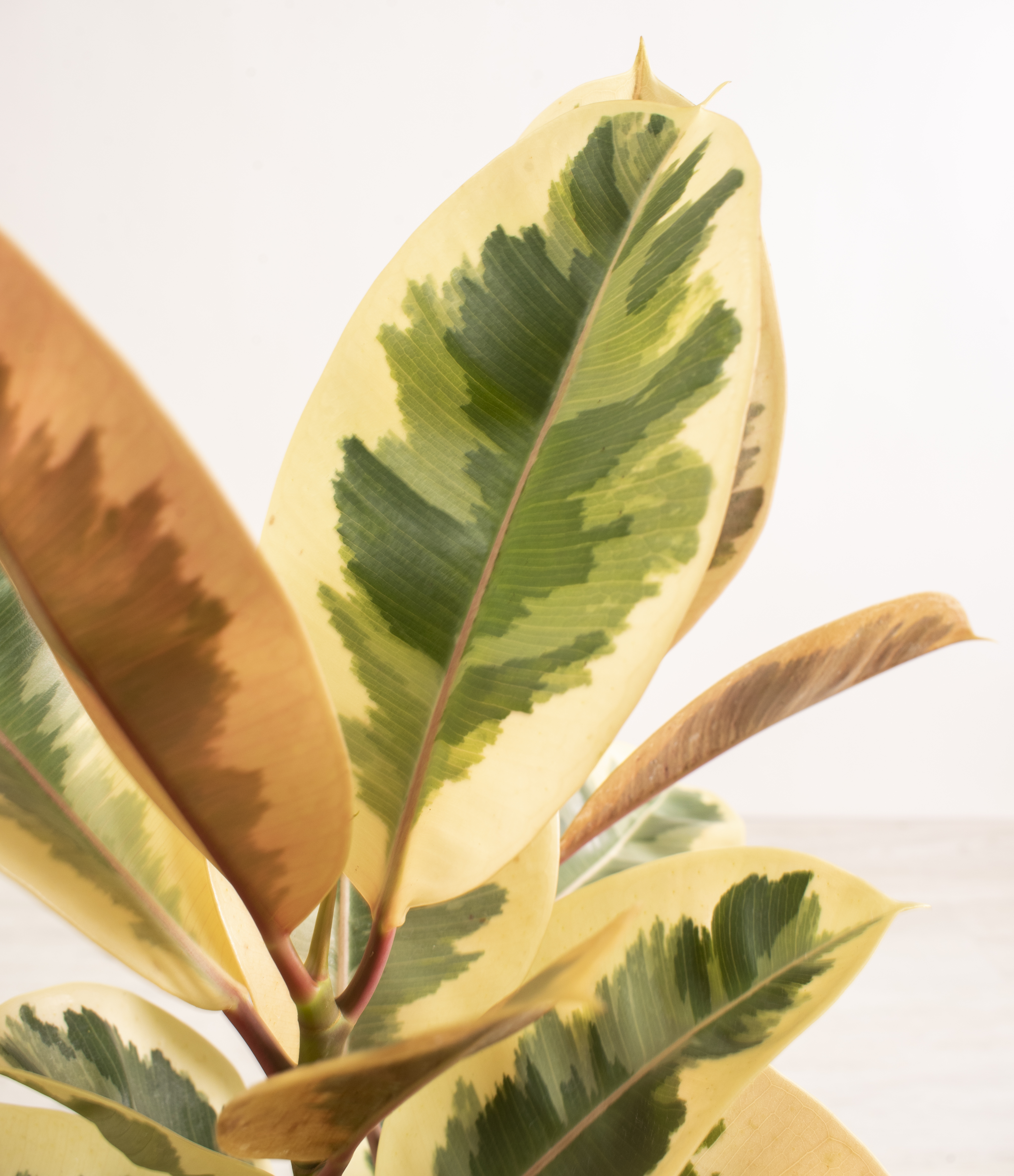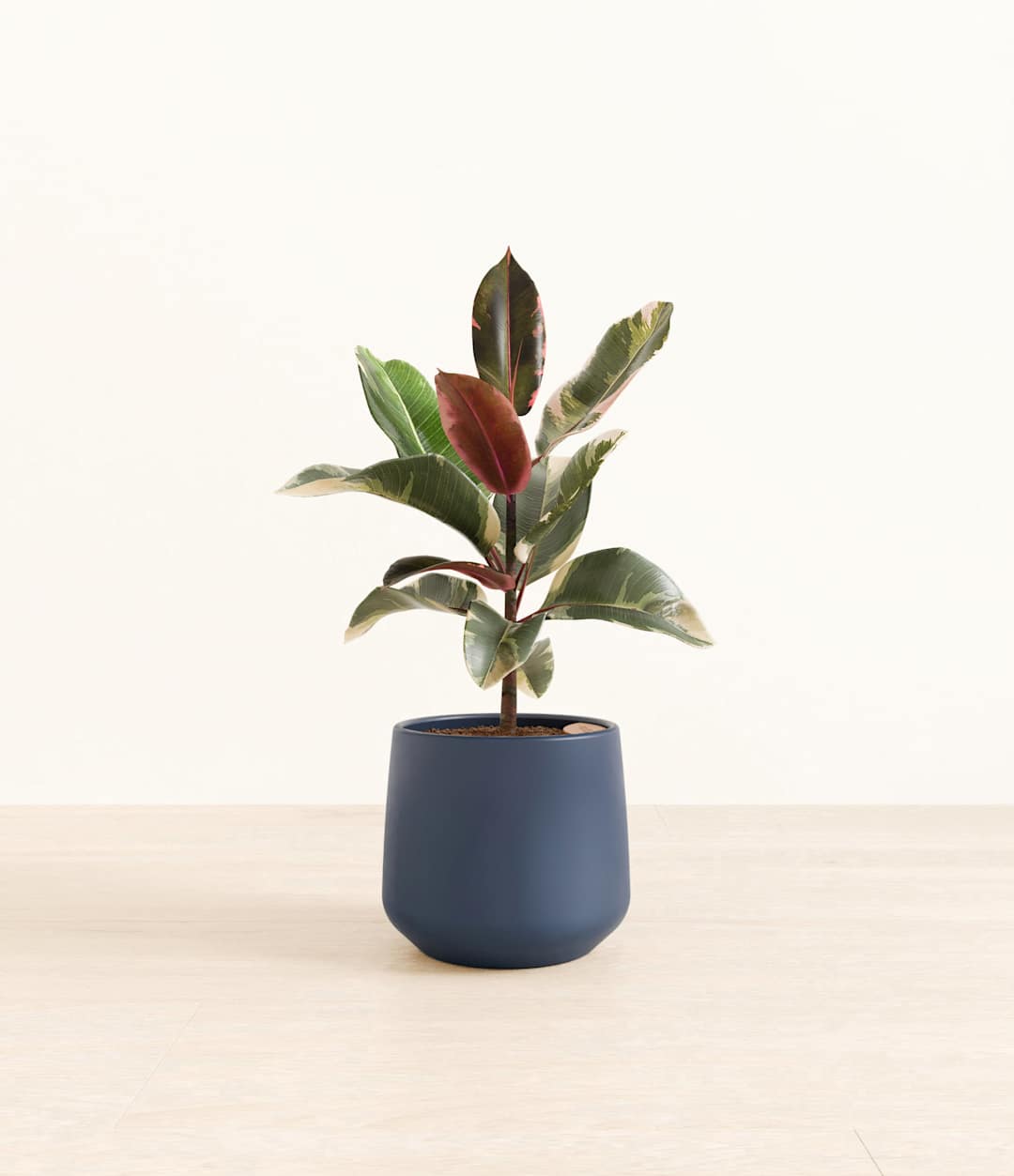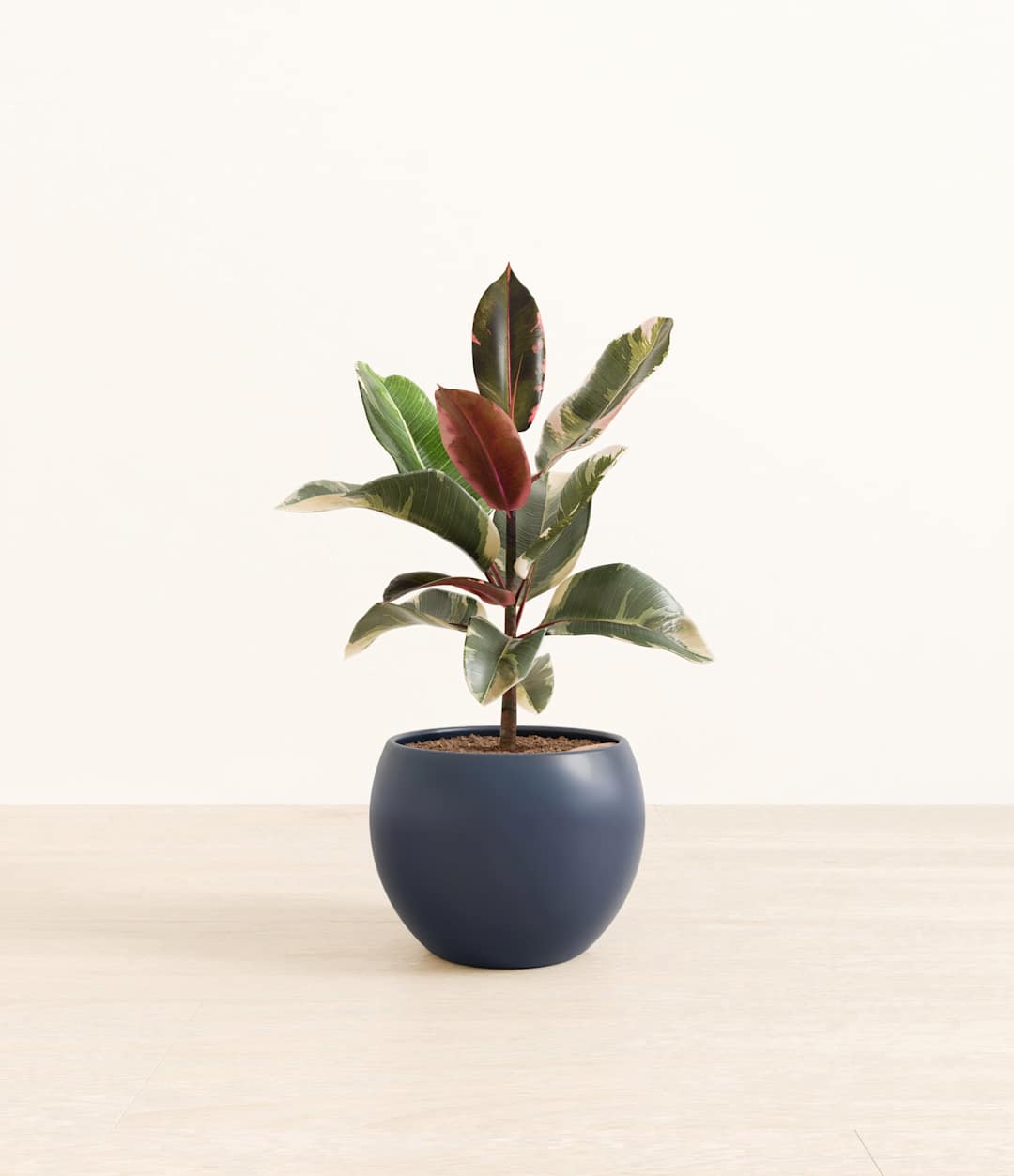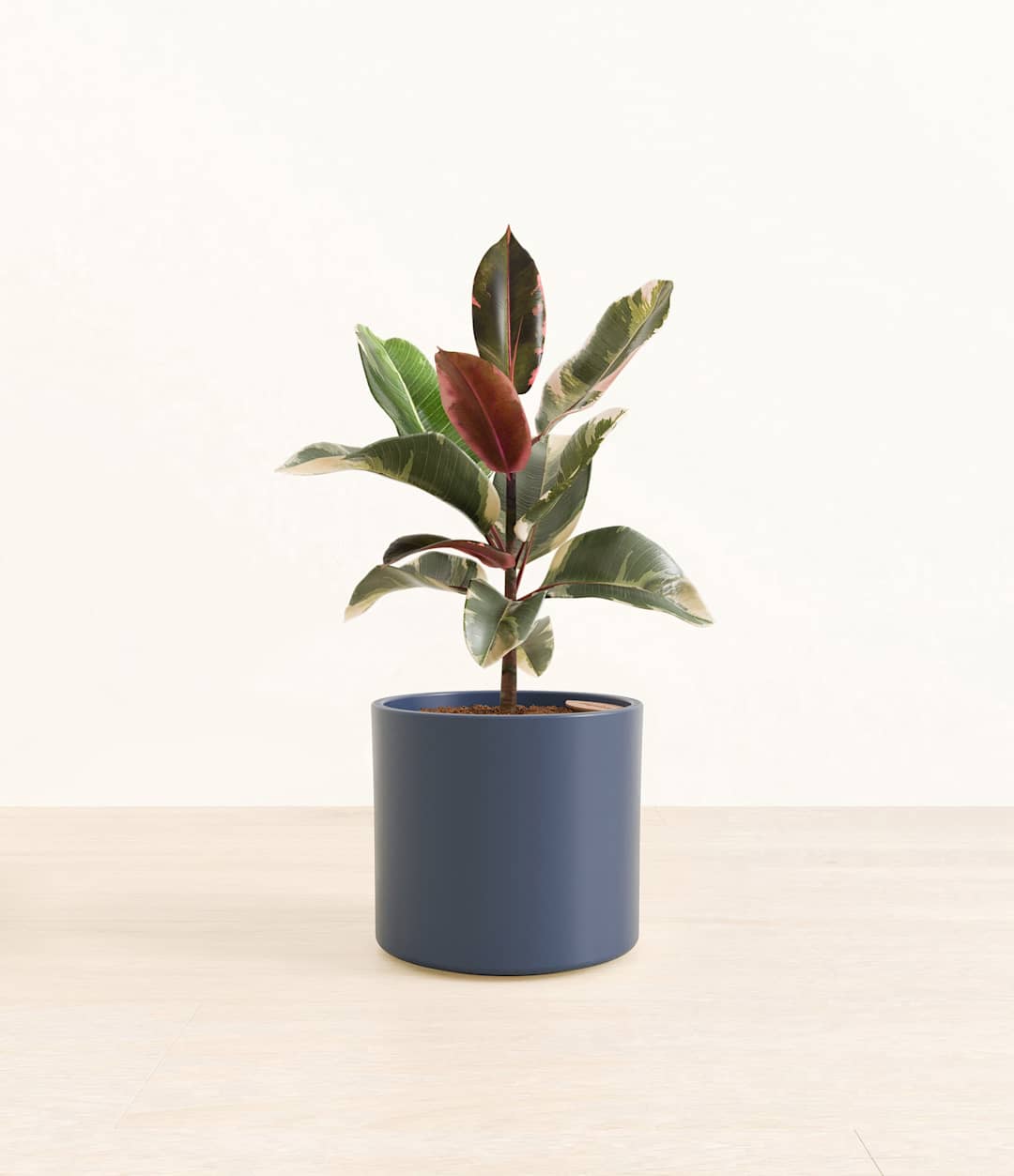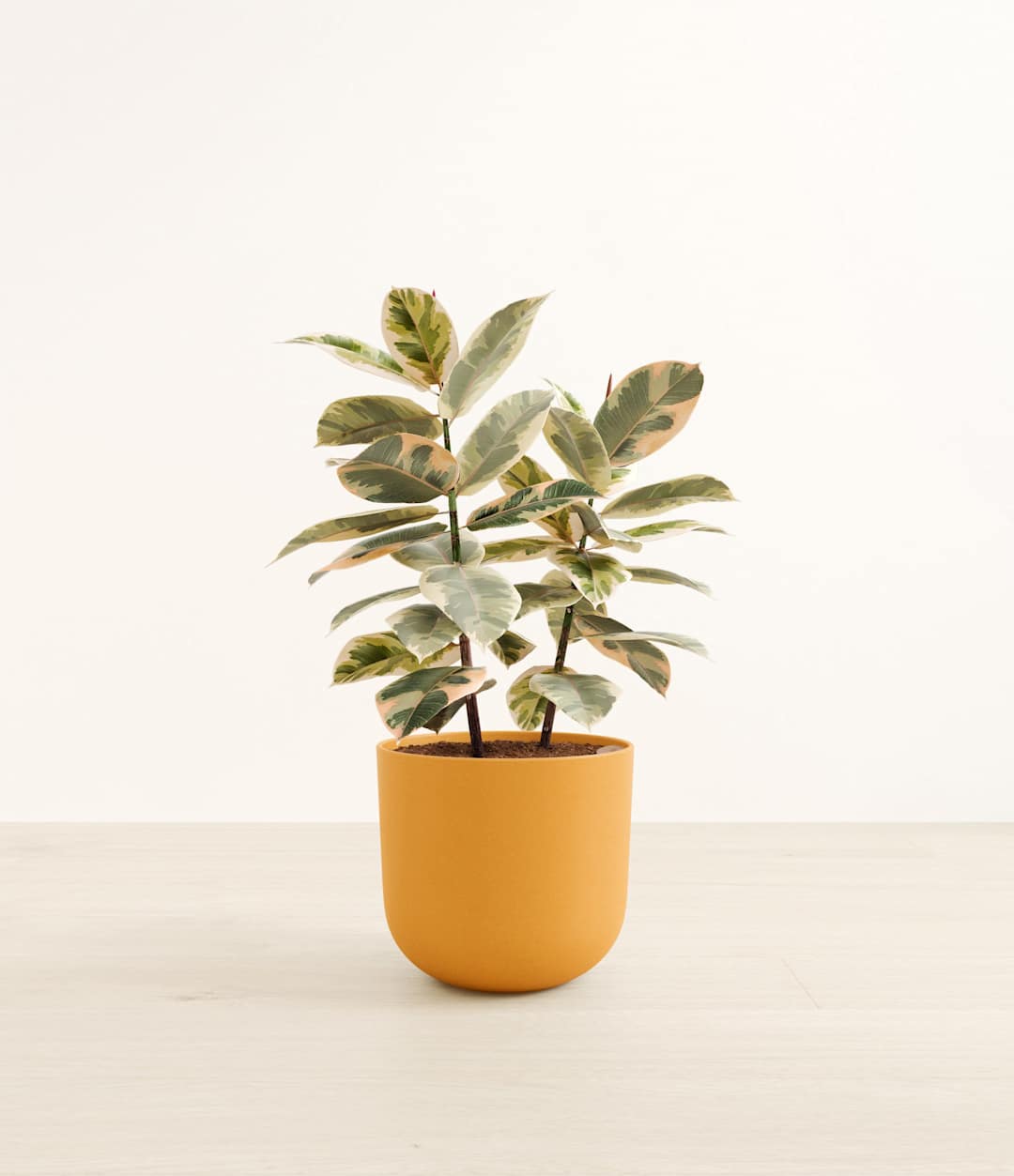Plant care library / Ficus Tineke
How to Care for Ficus Tineke
Shop this plantAbout Ficus Tineke
The exquisite Ficus Tineke is a North East Indian native known for its colorful leaves and milky sap that can be used to produce rubber. It belongs to the Moraceae or Mulberry family. This perennial plant's waxy evergreen leaves flaunt beautiful soft shades of pink, green, and white, making it a perfect fit for any space.
Other common names
- Tineke Rubber Tree
- Tineke Fig
- Indian Rubber Fig
- Ficus Elastica
- Variegated Rubber Tree
How Often Should I Water My Ficus Tineke?
Ficus Tineke responds better to under watering than overwatering, which can lead to the plant getting root rot. Luckily, with easyplant, watering your Ficus Tineke plant is simple. Check the easyplant reservoir once a month, fill it when empty, and you're all set!
If you don't have an easyplant pot to make your watering needs hassle-free, manually water your Ficus Tineke once every one to two weeks during the growing season and once every two weeks in the winter. Allow the top few inches of the soil to dry out before watering. These plants enjoy consistent minimal moisture, so don't allow the plant to dry out completely before watering. When you do water, be sure to pour out excess water, and don't allow your plant to sit in standing water. Distilled or rainwater works best, but if you use tap water, leave it out overnight so some of the harsh chemicals in the water can dissipate.
Ficus Tineke Light Needs
Ficus Tineke grows best in a space with bright direct light, where the sunlight streams inside directly, and can also adapt to spaces with bright indirect light, where the sun rays are diffused. Avoid placing it in spaces with low light or spaces without natural sunlight.
The ideal spot to place your Ficus Elastica is in an east-facing window or setting it back from a south or west-facing window, still in the path of light. You can also use a sheer curtain to diffuse the light in the afternoons when the sun's rays are harsher.
Ficus Tineke Plant Care
The more indirect light the Ficus Tineke gets, the better the chances are that its leaves will retain their beautiful pink and ruby hues. To help it grow optimally and evenly, occasionally dust the leaves with a microfiber cloth and rotate the pot by a ¼ turn once a month. Rotating will ensure the leaves get the light they need on all of their leaves.
How Big Will My Ficus Tineke Grow?
Ficus Tineke growth isn't just about overall plant growth but also leaf growth. New leaves appear every 3-4 weeks, sprouting from the sturdy stem of the plant, typically at the top. Fully grown leaves average to 12 inches in length and 5 inches in width.
Ficus Tineke is a moderate grower when you compare growth per year to overall growth. Like most plants, there is a difference in growth when the plant is indoors versus planted outdoors. Indoors, the Ficus Tineke grows to heights between 2-10 feet and a staggering 50 feet outdoors. Most often, indoor plants will reach about 5 to 6 feet.
This plant grows about 24 inches every year. It takes Ficus Tineke roughly 1-5 years to reach full maturity. Various factors affect his plant's growth, including proper lighting, regular watering, adequate temperature, and humidity.
Temperature & Humidity
Being a tropical plant, Ficus Tineke enjoys warmer climates. The ideal temperature for this plant is between 60-75˚F (15-24˚C). Don't allow the temperature in the space to drop below 55˚F (13˚C), as it will negatively impact your plant's health. Avoid placing it near drafts, heating or A/C vents, heaters, or fans.
This ideal humidity level for the Ficus Tineke is around 40%, and anything below 40% could lead to brown, crispy edges. Average household humidity is between 30-40%, so you may not need to raise the humidity level to accommodate your plant. If the humidity levels in your home are insufficient, you can use a humidifier or place it near a pebble tray with water, group it with other plants or locate the plant in a humid environment such as a kitchen or a bathroom.
Are Ficus Tineke Toxic for Pets & Kids?
Some plants add a pleasing aesthetic to the home and can adapt well to the indoor environment but are unsafe to keep in the house. When considering a houseplant, it's important to know if anything toxic about the plant could harm children or animals if touched or ingested.
If ingested, the Ficus Tineke is highly toxic for people and animals, so keep it away from children and pets. The toxicity of this plant is because of the latex in the sap. Symptoms range from mild to acute contact dermatitis, including rashes and blistering. It can also cause severe burning around the eyes, nose, and mouth.
Those with a latex allergy can have a severe reaction leading to anaphylactic shock. If humans or pets come into contact with the sap or ingest any part of the plant, contact a physician or veterinarian.
Troubleshooting Common Problems with Ficus Tineke
Part of plant care is observing how your plant is fairing in its environment, so you can make adjustments if needed. Every houseplant will have different signs or tells when they aren't doing well. Here are a few things to look out for with the Ficus Tineke and what to do to fix the issue.
If the leaves on your Ficus Tineke start to lose their variegation in color, try moving the plant closer to a light source. Often, the leaves will become greener and plainer in color if they don't receive enough light.
If the leaves of the Ficus Tineke are getting brown and crips, it could indicate it's getting too much sun. Move the plant a bit further away from the window but still in the path of light. You can also use a sheer curtain to diffuse the light.
If you notice dried-up, dropping leaves, it could be due to underwatering or overuse of fertilizer. Pull back on the frequency of using fertilizer or dilute its strength. Check the soil more frequently and water when the top few inches are dry.
If you notice gray, green, or orange spots on the leaves of the Ficus Tineke, these are Algal leaf spots caused by too much humidity. Cut off affected foliage and keep them dry. Use a humidifier to maintain humidity rather than misting.
If you notice yellowing leaves on your Ficus Tineke and the stems are mushy, the plant may have root rot due to overwatering. Check the soil before watering; only water if the first few inches of soil are dry. You may need to repot the plant in fresh well-draining soil and remove any parts of the root ball that have turned black.
Ficus Tineke might be prone to pests such as plant scale, leaf and root mealybugs, aphids, and spider mites. These pests tend to congregate on the underside of leaves and appear like milky webbing or brown bumps on the leaves and stem. You can remove them with a microfiber cloth and some alcohol or by thoroughly rinsing off your plant. Treat the leaves with insecticidal soap or neem oil.
Frequently Asked Questions about Ficus Tineke Plant
- Does Ficus Tineke Need a Lot of Light?Ficus Tineke needs a decent amount of light, especially to keep their color variegation. Bright, direct light in the early morning hours is suitable, but diffuse the incoming light in the afternoons when the sun's rays are much harsher. You can do so with a sheer curtain over the window. This method will allow for sufficient light while avoiding leaf scorch.
- How Big Does a Ficus Tineke Get?The average height for the Ficus Tineke indoors is 5 or 6 feet. However, the range of growth of this plant indoors is between 2-10 feet. Outdoors the Ficus Tineke can reach massive heights of 50 feet.
- How Often Should I Water My Ficus Tineke?On average, you'll likely be watering your Ficus Tineke once every one to two weeks during their growing season and then slowing down a bit in the winter. The rule of thumb is to check the soil and wait until the top few inches have dried. Avoid allowing the plant to dry out completely or sit in excess water. To make this easier and more consistent, consider using the easyplant's self-watering pot. By filling the reservoir once a month, your Ficus Tineke will consistently receive the right amount of water it needs without the risk of drying out or being overwatered.
